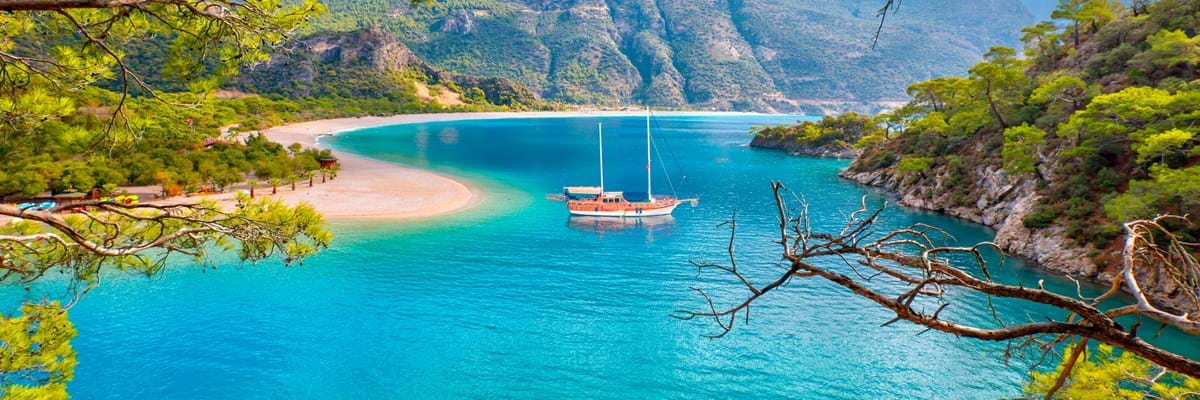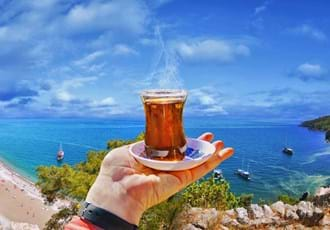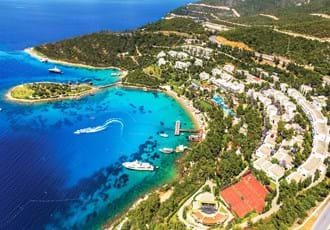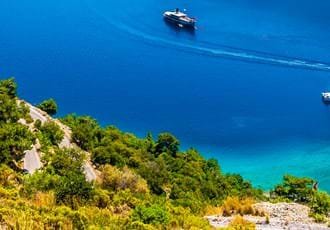Aya Sofya: Istanbul's most famous monument was built by Emperor Justinian in 537 in an attempt to reassert the great Roman Empire. In 1453 Mehmet the Conqueror converted it to a mosque but in 1935, Ataturk proclaimed it a museum. With a magnificent domed ceiling, mosaics, and other stunning artefacts, it is well-worth a visit.
Bodrum Amphitheatre: On a hillside, overlooking Bodrum this huge ancient theatre, which held about 13000 people, was built during the Carian reign in the Hellenistic age (330 - 30 BC.). It became an open-air museum following excavations in 1973.
Cappadocia: Not to be missed are these extraordinary pinnacles of solid lava following a volcanic eruption thousands of years ago. Within the rock, the Byzantines constructed underground cities with frescoes and churches in the caverns, and today you will find restaurants, even hotels within some of them. Tours of the eerie valleys and unique landscape are very popular whether hiking, trail-biking or in a hot air balloon.
Ephesus: One of the Seven Wonders of the Ancient World and considered the best-preserved classical city possibly in Europe, Ephesus was once the capital of The Roman province of Asia with over quarter of a million inhabitants. It took 150 years to excavate and includes a temple devoted to the fertility goddess, Artemis, the marble-lined Curetes Way, the Library of Celsus and many more amazing insights into the lives of the city's inhabitants.
Gallipoli Peninsular: Site of the ill-fated Gallipoli campaign in WWI, this beautiful, peaceful area acknowledges itself as the resting place of the 130,00 unfortunate troops who died, in countless ANZAC cemeteries and memorials. The most moving is possibly the Lone Pine cemetery where the youngest soldier to die, at just 14, is buried. Guided tours can be taken around the area with poignant talks about the tragic events.
Mausoleum: Lending its name to all similar constructions to follow, this monumental tomb was erected by Artemesia II in honour of her husband, King Mausolus and was once one of the Seven Wonders of the Ancient World. Destroyed by an earthquake in 12th century, today the attraction, near Bodrum in an area formerly known as Helicarnassus, includes an exhibition about what the Mausoleum would have looked like along with a large model of it.
Pamukkale: A Unesco World Heritage Site since 1988, this area, which translates as 'Cotton Castle' is made up of layers of hot springs and travertines - terraces of calcite deposit by the water which flowed down. On the top, ruins of a Greco-Roman spa city, Hierapolis, are to be found. Tourists come to bathe in the pools, some of which have now been replaced with artificial ones to prevent damage.
Safranbolu: This town, who name means saffron city, was a centre for growing and trading some of the worlds best quality saffron. It gained UNESCO World Heritage status in 1994 as it is made up of perfectly preserved Ottoman architecture.
St. Peter's Castle: The iconic Castle of St. Peter, Bodrum, dates back to the Knights of St. John and now is one the museum of Underwater Archaeology, one of the finest museums in the region incorporating wonderful views of the town and seas. It includes several mighty towers, a chapel, a dungeon and Turkish bath, all set in gardens and linked by steep steps and passageways.







